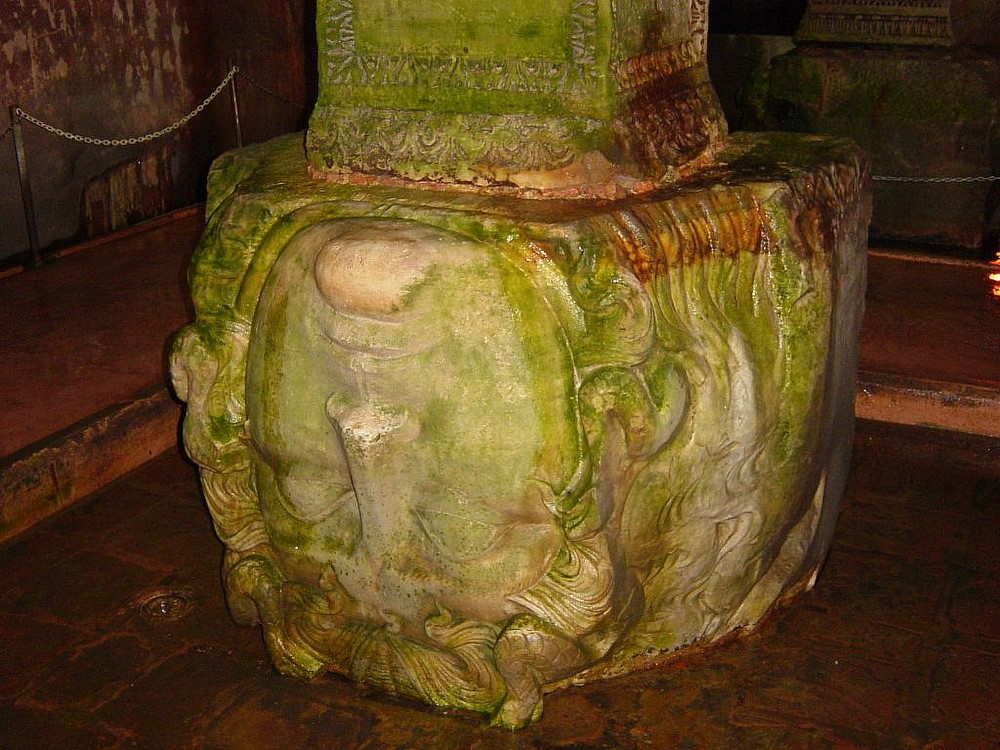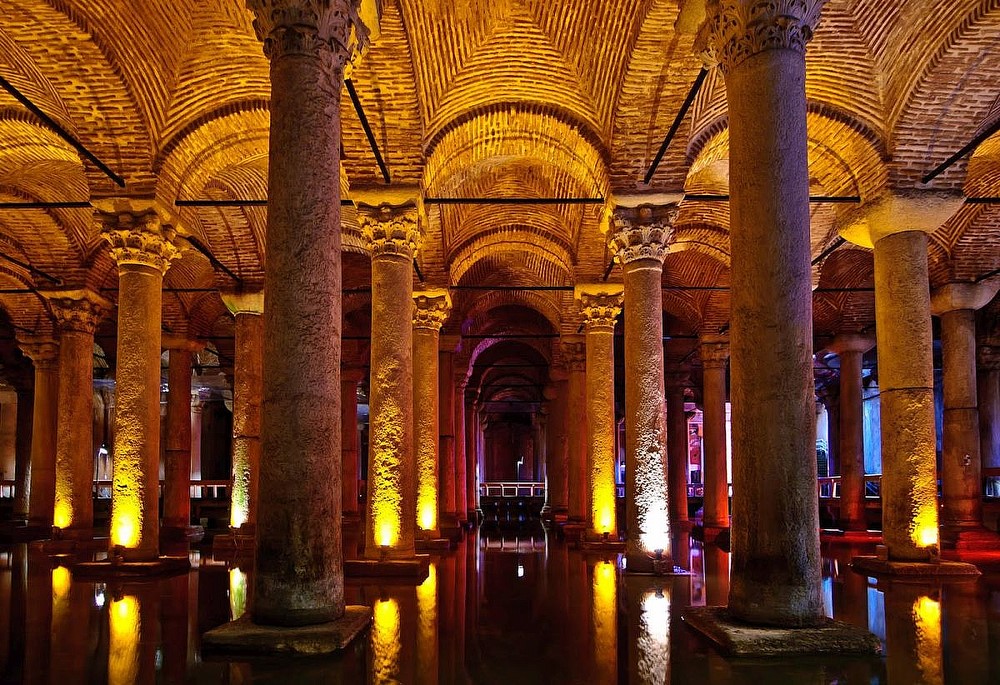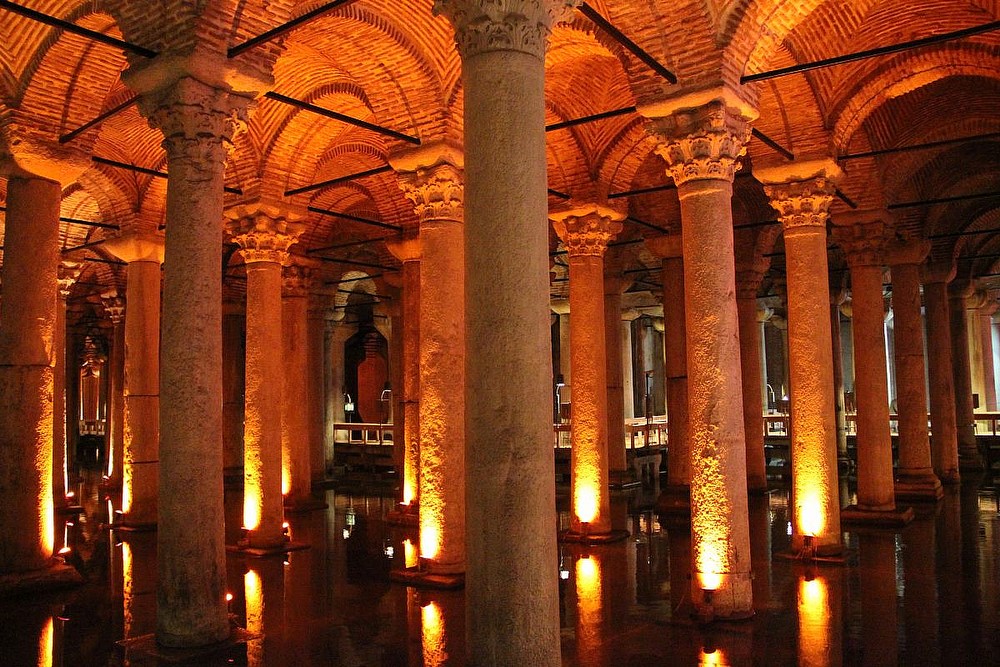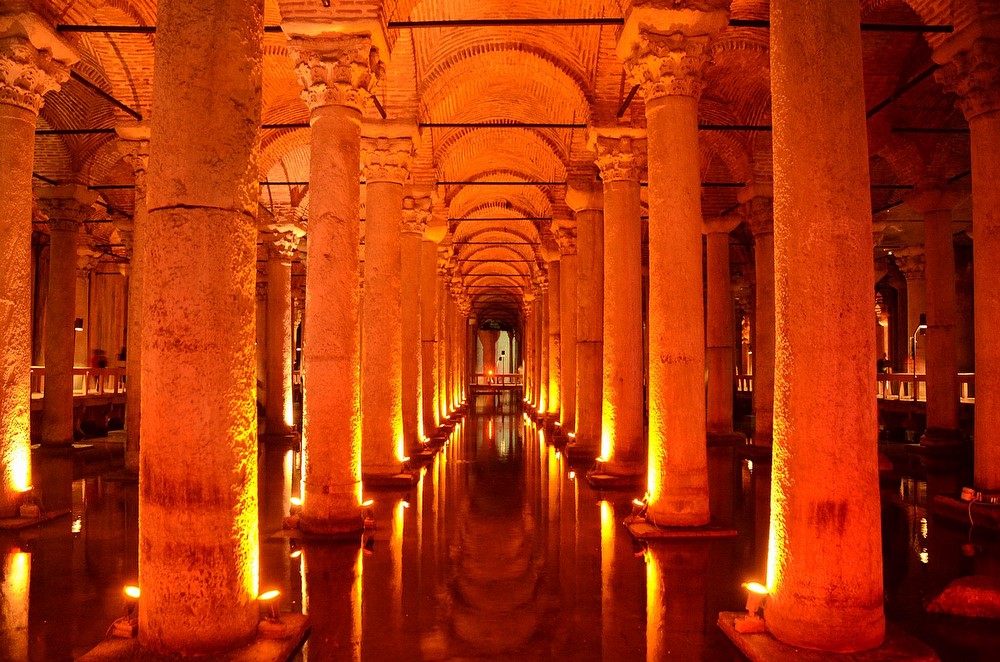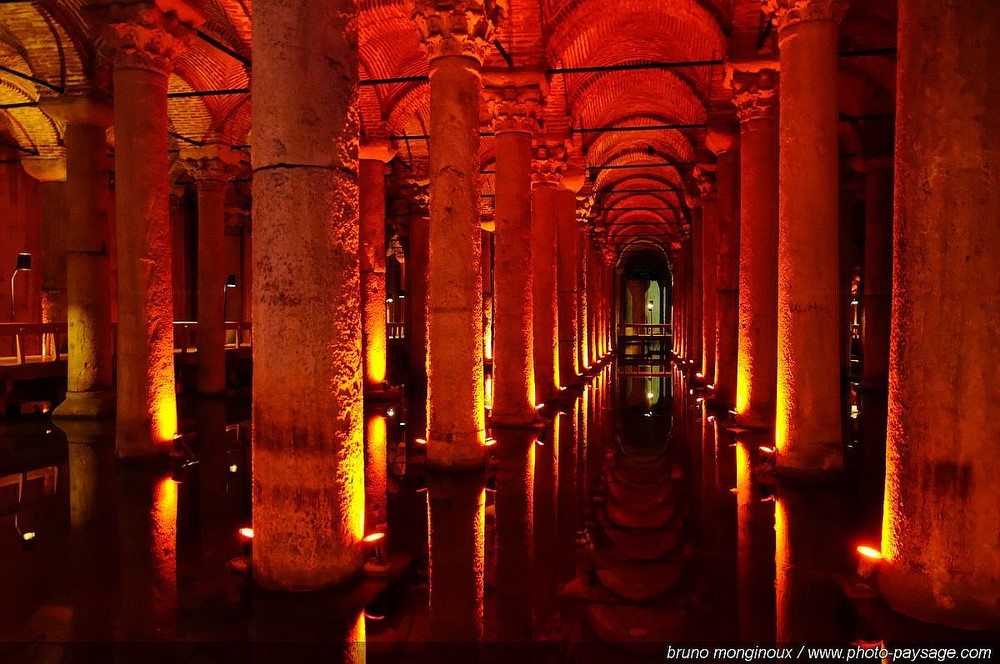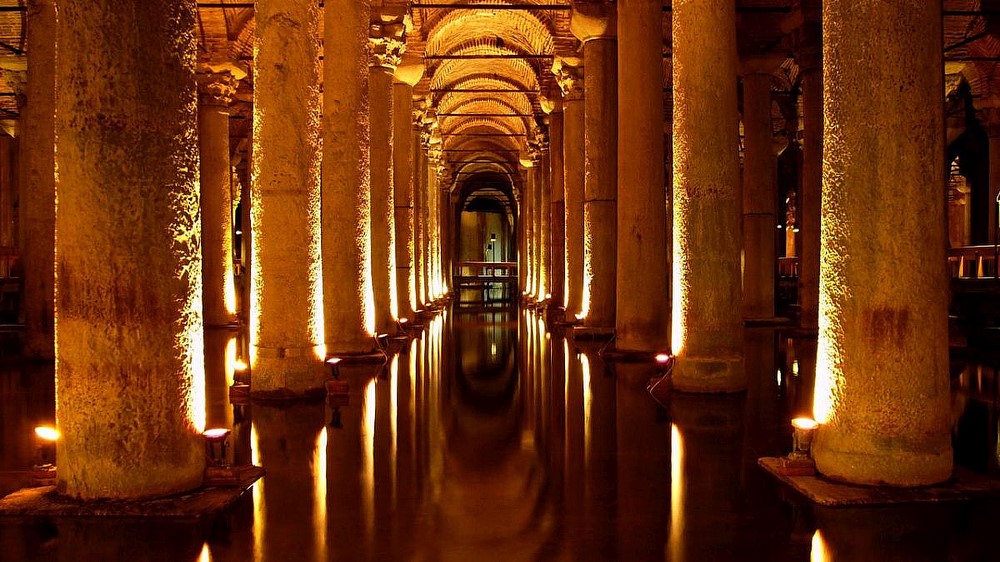BASILICA CISTERN
Hundreds of ancient cisterns lie hidden beneath the streets of Istanbul. The Basilica Cistern is one of Istanbul’s most unique tourist attractions. Also known as the “Sunken Palace,” the Basilica Cistern was originally constructed in 532 (during the reign of Justinian I) as a water reservoir to provide water to the Great Palace and nearby buildings. The largest surviving Byzantine cistern in Istanbul, it was constructed using 336 columns, many of which were salvaged from ruined temples and feature finely carved capitals. Its symmetry and sheer grandeur of conception are quite breathtaking, and its cavernous depths make a great retreat on summer days.
Originally known as the Basilica Cistern because it lay underneath the Stoa Basilica, one of the great squares on the city’s first hill, the cistern was designed to service the Great Palace and surrounding buildings and was capable of storing up to eighty thousand cubic meters of water delivered via twenty kilometers of aqueducts from a reservoir near the Black Sea. It closed when the Byzantine emperors relocated from the Great Palace and lay forgotten for centuries. The cistern was accidentally rediscovered in 1545, when scholar Petrus Gyllius was researching Byzantine antiquities in the city and was told by local residents that they were miraculously able to obtain water by lowering buckets into a dark space below their basement floors. Gyllius reports that some were even catching fish this way! Intrigued, he explored the neighborhood and finally accessed the cistern through one of the basements. The Basilica Cistern was cleaned and renovated in 1985 by the Istanbul Metropolitan Municipality and opened to the public in 1987, instantly becoming one of the Istanbul’s most popular tourist destinations.



